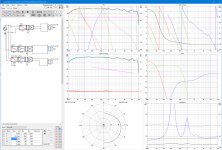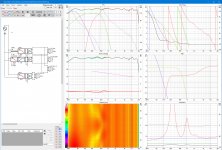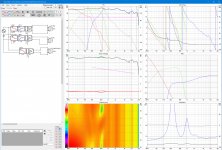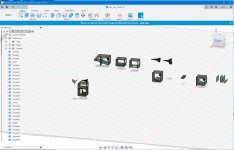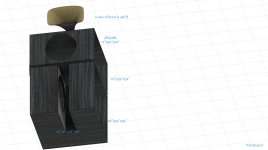That small tweeter horn most probably disturbs the response of the big horns.
Yep. I wonder where is the optimum position of the small horn in this set up. I may do the same as this. lol.
That looks promising.
Playing around with VituixCad, is there a way to enter driver diameter? Or another free program that will let me get a little more intimate with the polar modelling...something that is user friendly, not Abec....
Also, I either heard or get the notion that having to eq over the crossover band (voicing or room eq)....sucks?
Attachments
Last edited:
Hi, quickest way to success is to build a prototype, measure the polars (aka. spinorama) then model the crossovers and listen. Tweak, built better proto if needed, rinse and repeat. No amount of modeling will be as accurate as measurements. Sorry, no shortcut to happiness 😉 A single prototype box will also tell you aspects of mechanical challenges with such a big speaker build. Eventually, you'll get so much more satisfying speaker with one or two prototypes than without. Have fun!
Last edited:
If I could get vituixcab polar chart to change from 446hz to anything else...that might relieve some of my stress...
The manual says this "Checking Polar chart will show polar plot at frequency selected with horizontal scrollbar"
Have you got that checked ? Because I don't see a scrollbar in your image.
Have you got that checked ? Because I don't see a scrollbar in your image.
Hi Camplo:
Vituix will do all you ask and more but you might have to RTFM to find out how🙂 To save you time, I will give you some hints.
If you don't have axial measurements, use its SPL Trace tool to get equivalent from the data sheet FR graph. Then open Diffraction tool to enter piston diameter, baffle shape, etc. Then in lower right, point diffraction tool at your measurement or trace data, check all the boxes to synthesize directivity based on piston diameter, and check export. Back in the main screen, point the driver screen at that synthesized directivity then right clock on the directivity graph and ask it for a polar map. After you take detailed measurements, replace synthesized directivity files with measured equivalents.
You can see examples in what has become my line array simulation thread:
https://www.diyaudio.com/forums/full-range/337956-range-line-array-wall-corner-placement-44.html#post6192825
Vituix will do all you ask and more but you might have to RTFM to find out how🙂 To save you time, I will give you some hints.
If you don't have axial measurements, use its SPL Trace tool to get equivalent from the data sheet FR graph. Then open Diffraction tool to enter piston diameter, baffle shape, etc. Then in lower right, point diffraction tool at your measurement or trace data, check all the boxes to synthesize directivity based on piston diameter, and check export. Back in the main screen, point the driver screen at that synthesized directivity then right clock on the directivity graph and ask it for a polar map. After you take detailed measurements, replace synthesized directivity files with measured equivalents.
You can see examples in what has become my line array simulation thread:
https://www.diyaudio.com/forums/full-range/337956-range-line-array-wall-corner-placement-44.html#post6192825
Nc535, ty for sharing, I've been up trying different, I'll have intake your info and go at it soon. I really like how things are turning out with puting the 15m about the Axi...the first sim has the 18h+'s combine in slot, the last one is best I could model to represent one 18 facing forward and another facing the floor, both crossed different...a strange mtm vs a mtw of sorts...
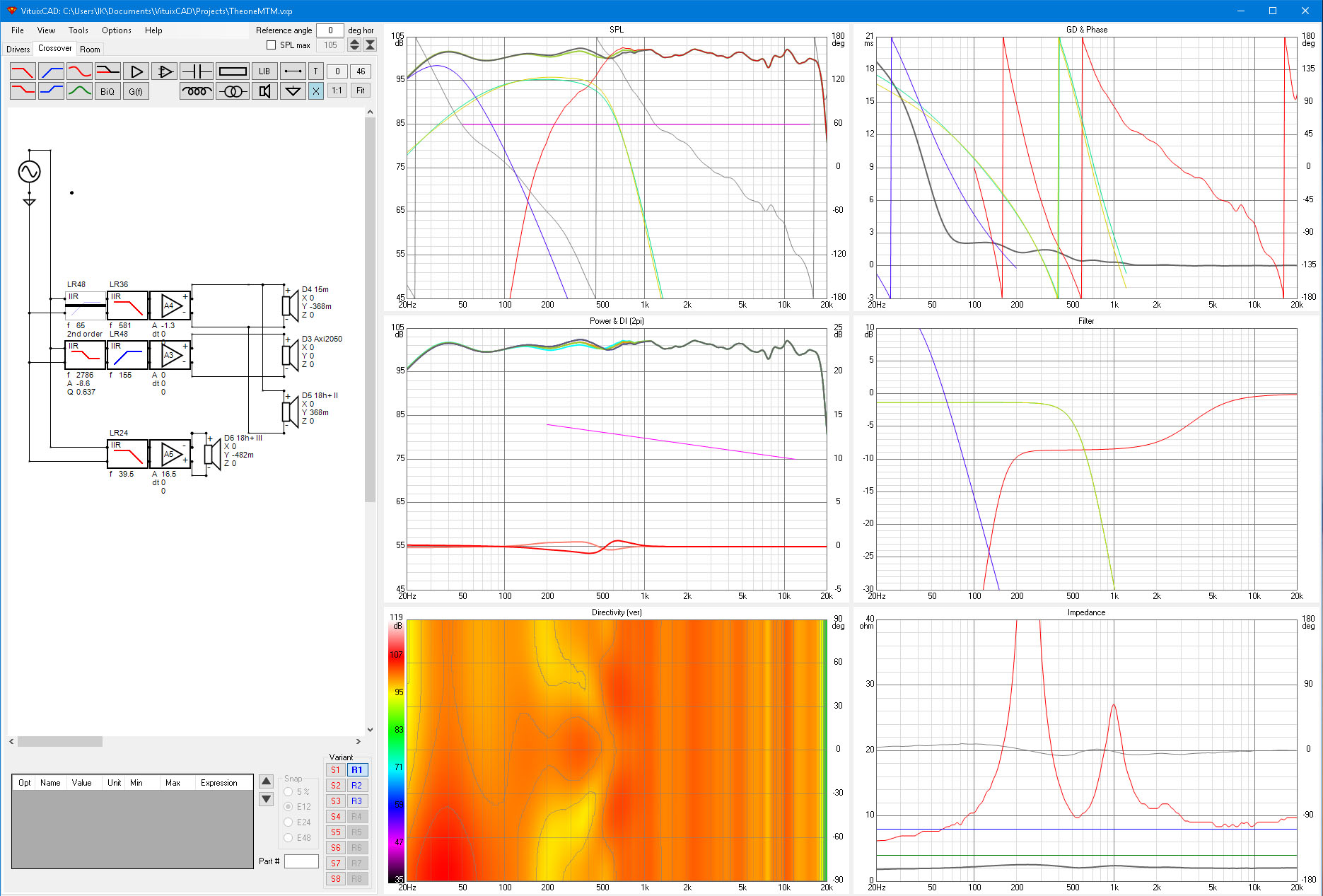
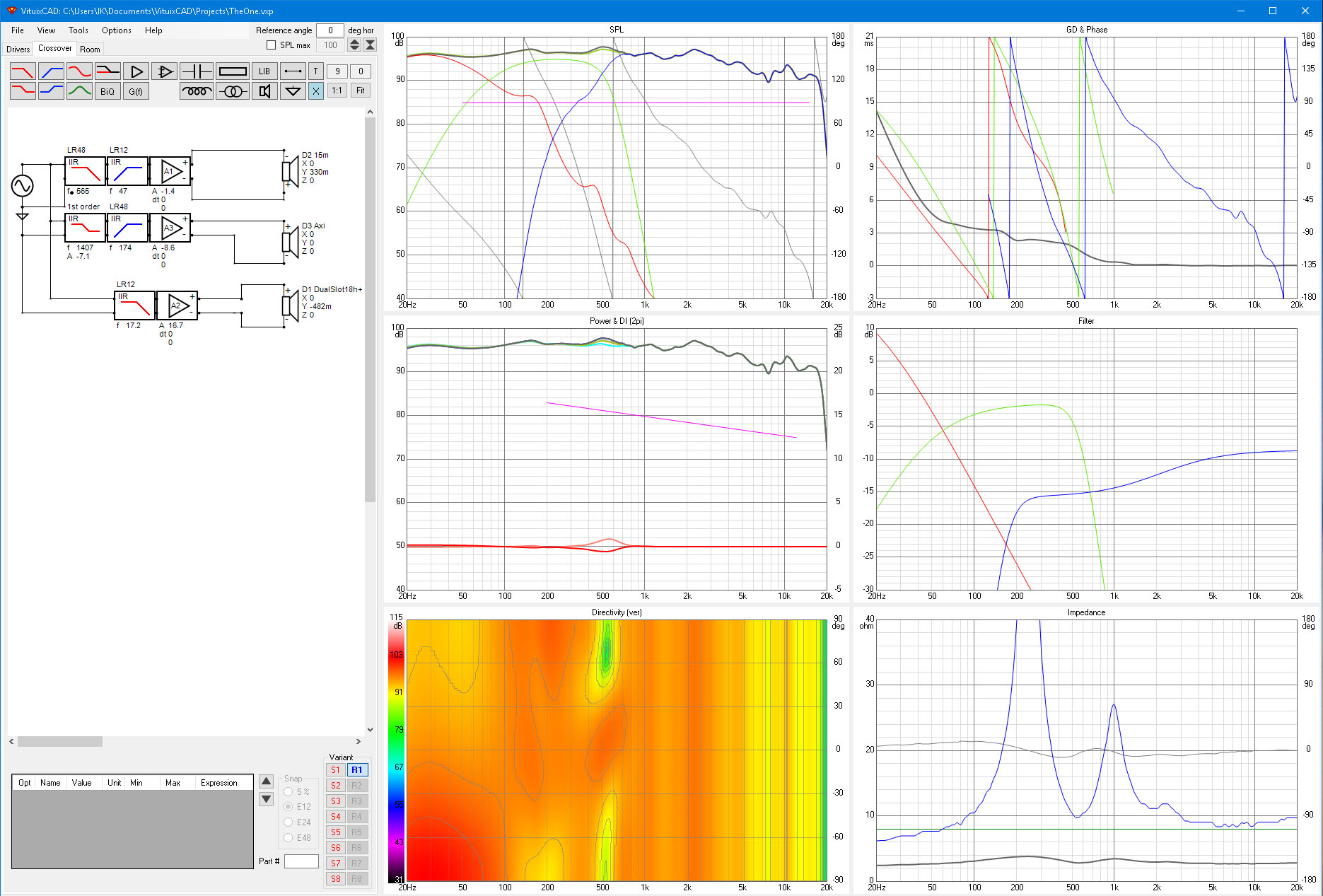
I'm just experimenting, this is the Axi response on Soes 30, hopefully I can get a better idea of what I'm about to try build after I learn more about the program.
I'm just experimenting, this is the Axi response on Soes 30, hopefully I can get a better idea of what I'm about to try build after I learn more about the program.
Attachments
Yes, there is a learning curve and the way to learn is what you are doing.
I can see you don't have good directivity data yet, if using SEOS30, I can see why.
Below pattern control frequency, mouth size controls polar response so use it in diffraction tool following Vituix advice for a planar radiator - model it as a number of horizontal slices stacked together
I can see you don't have good directivity data yet, if using SEOS30, I can see why.
Below pattern control frequency, mouth size controls polar response so use it in diffraction tool following Vituix advice for a planar radiator - model it as a number of horizontal slices stacked together
- this one is evading me....I created one of these but didn't find where to use the file generated..Back in the main screen, point the driver screen at that synthesized directivity then right clock on the directivity graph
ABEC3 successor AKABAK3 seems to be released, have you checked that out yet? I suppose it should be easier to use than ABEC, but never know until try 🙂 https://www.diyaudio.com/forums/equipment-and-tools/353871-akabak-3-a.html#post6189400
- this one is evading me....I created one of these but didn't find where to use the file generated..
click the "Drivers" button in the upper left of the main screen
You will see a window with "Drivers" above it
Click the green + button and enter you driver's name/part# (same as on the XO schematic) in the popup
Next click the directory symbol to the right of "Frequency Response" and browse to the directory where your diffraction tool directivity files are kept.
Inside that directory, group highlight all the directivity files and then press enter or click open or whatever. The graphs should now reflect the directivity.
Do that for each of your drivers
I will try again, last I tried, when I exported the directivity file, it resulted in one file...group highlight all the directivity files
A basic representation of my 18"

YouTube
Making a little progress.... this video might helped me get the ball rolling...I'm not sure I could create a box with 2 drivers yet...cause I have no idea how it knows to be where its at dont his model lol! This is more than I could do yesterday though...progress!
YouTube
Making a little progress.... this video might helped me get the ball rolling...I'm not sure I could create a box with 2 drivers yet...cause I have no idea how it knows to be where its at dont his model lol! This is more than I could do yesterday though...progress!
Attachments
Focusrite Scarlett 8i6 Audio Recording Interface, USB 2.0, 24-bit / 192kHz 815301005193 | eBay
Looking at focusrite for my soundcard solution to supply the 3 amps. Any one object to this? or have a better product please mention it...
I was thinking about buying the wood and having some one mill it...but if I recall I might or might not have a table saw....if I do I can most likely cut the pieces myself.
Wood cutting time aaaggghhhh.....almost a year later....supposed to start back to work monday....I don't think I'll find anything else to debate...I looked up my guy Bill Fitzmaurice and grabbed some wisdom on box building approach....that combined with my newly acquired knowledge of TL....bracing should be most effective. TO use screws or not...I have always used wood screws...I see a lot of people using glue...I could see myself using glue.....looks like I'd need about 40 bucks worth of clamps...the JBL2386 will be the first key note speaker for the build...I think I'm ready....
This is a glimpse into what may happen...this response represents the Axi2050 on a Seos30 but I used the dimensions of the 2386 for the modeling which skews things a little since the radiator is actually inside the horn, so the polar beaming is exacerbated....I could also try and model the 18H's as the slot dimensions but...you get the idea... I could probably play with the eq and get flatter response from the Axi2050 down to 300-350hz but...this is what I've modelled so far. Thanks for the slight kick in the butt nc535...
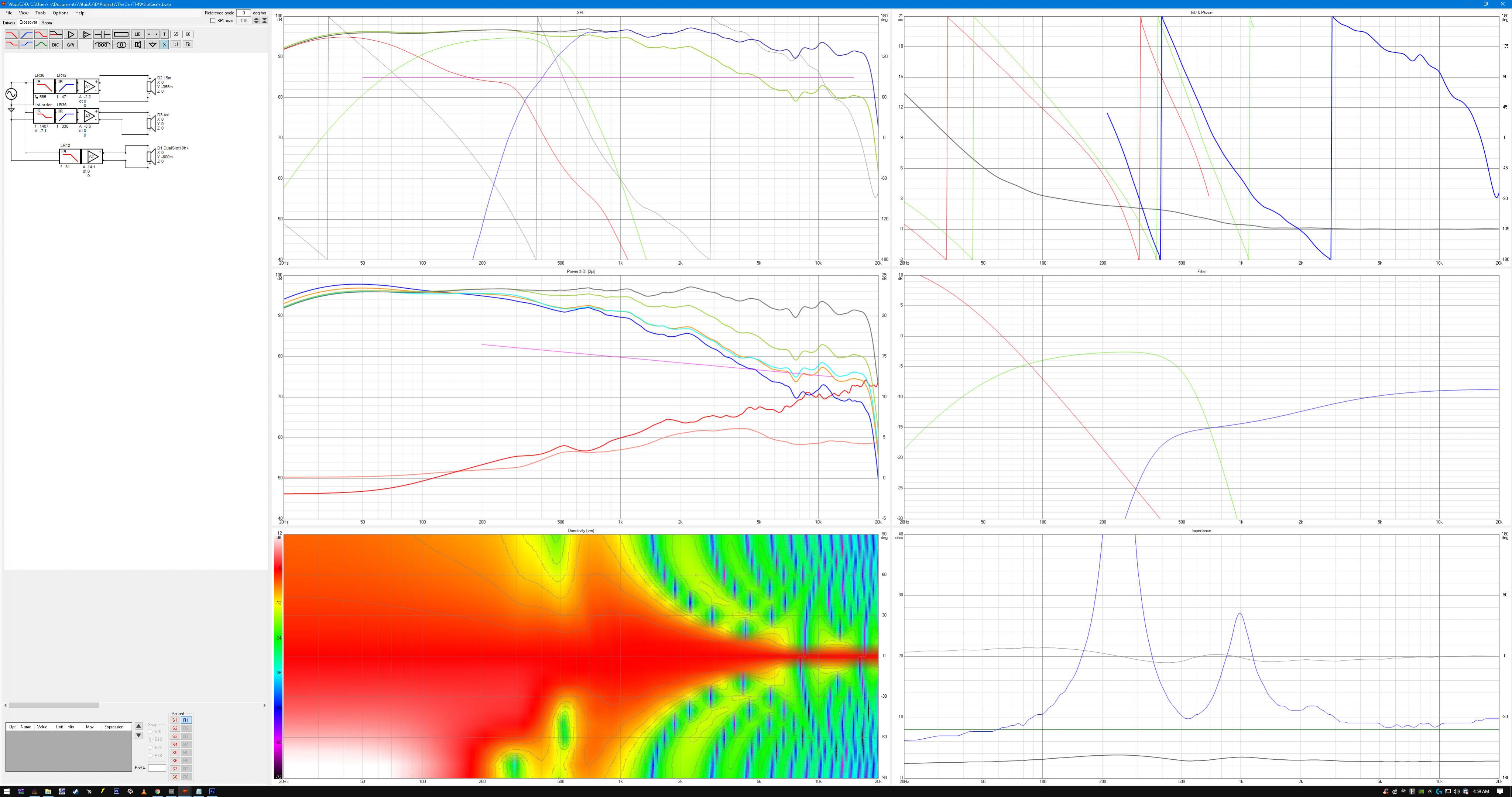
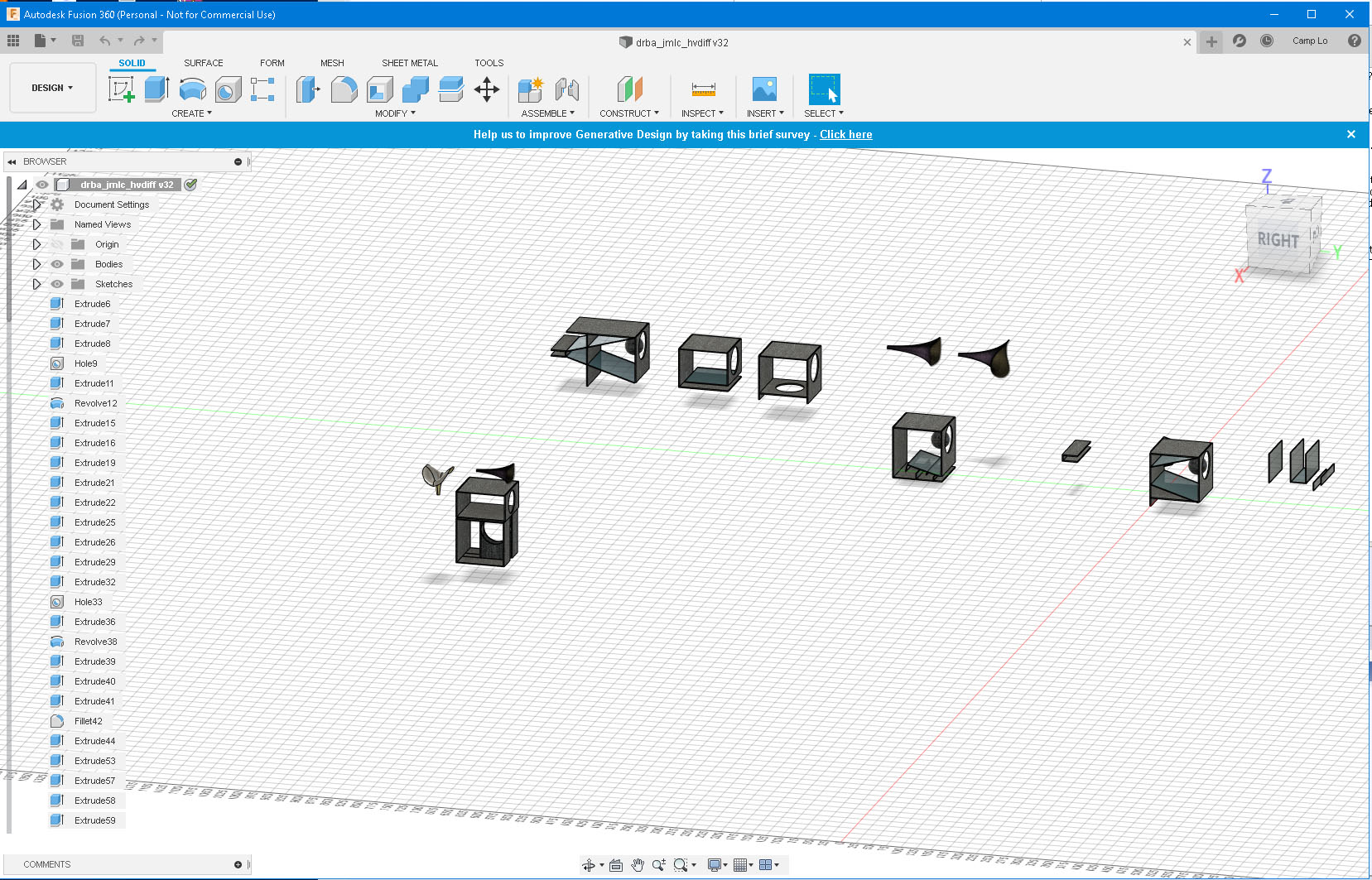
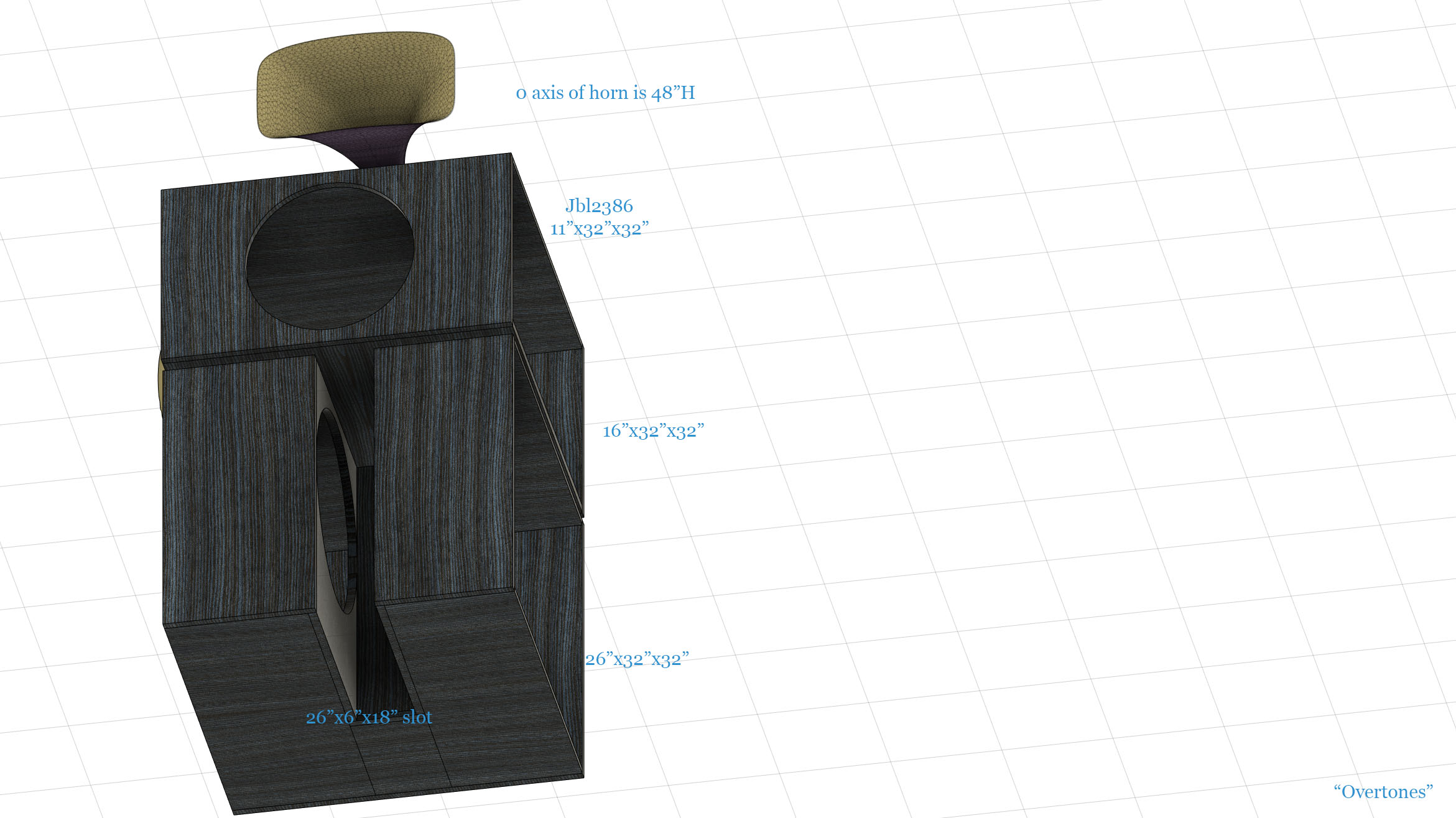
Qts of both mid and bass are somewhere in early the 0.5's
Looking at focusrite for my soundcard solution to supply the 3 amps. Any one object to this? or have a better product please mention it...
I was thinking about buying the wood and having some one mill it...but if I recall I might or might not have a table saw....if I do I can most likely cut the pieces myself.
Wood cutting time aaaggghhhh.....almost a year later....supposed to start back to work monday....I don't think I'll find anything else to debate...I looked up my guy Bill Fitzmaurice and grabbed some wisdom on box building approach....that combined with my newly acquired knowledge of TL....bracing should be most effective. TO use screws or not...I have always used wood screws...I see a lot of people using glue...I could see myself using glue.....looks like I'd need about 40 bucks worth of clamps...the JBL2386 will be the first key note speaker for the build...I think I'm ready....
This is a glimpse into what may happen...this response represents the Axi2050 on a Seos30 but I used the dimensions of the 2386 for the modeling which skews things a little since the radiator is actually inside the horn, so the polar beaming is exacerbated....I could also try and model the 18H's as the slot dimensions but...you get the idea... I could probably play with the eq and get flatter response from the Axi2050 down to 300-350hz but...this is what I've modelled so far. Thanks for the slight kick in the butt nc535...
Qts of both mid and bass are somewhere in early the 0.5's
Attachments
Last edited:
The Focusrite interfaces are good (I have the 18i20) but if I was to buy one today it would probably be a MOTU.Focusrite Scarlett 8i6 Audio Recording Interface, USB 2.0, 24-bit / 192kHz 815301005193 | eBay
Looking at focusrite for my soundcard solution to supply the 3 amps. Any one object to this? or have a better product please mention it...
This one looks good for your purpose but it will be more expensive
MOTU.com - Overview
The Focusrite interfaces are good (I have the 18i20) but if I was to buy one today it would probably be a MOTU.
This one looks good for your purpose but it will be more expensive
MOTU.com - Overview
OK, thanks! thats on the radar now...
have you see this?
Arturia AudioFuse 8Pre
I can also run the 18"s; one facing me, and one facing the floor.....anyone think this would provide better sound quality?
Last edited:
I can also run the 18"s; one facing me, and one facing the floor.....anyone think this would provide better sound quality?
Are the drivers designed to be installed face down?? Gravity is not your friend so they need stiff suspensions that will not sag and displace the VC.
Rob🙂
Nice picture of the arrangement!
Could you also provide another picture with the rounded mouth horn on top?
I would consider to use a Ripol for the lowest third, so side walls closed and back slots open. This loads the chassis a lot better and should provide a more dipole like radiation towards the listening position. The same for the middle chassis as u-frame or should this be a closed box?
Could you also provide another picture with the rounded mouth horn on top?
I would consider to use a Ripol for the lowest third, so side walls closed and back slots open. This loads the chassis a lot better and should provide a more dipole like radiation towards the listening position. The same for the middle chassis as u-frame or should this be a closed box?
- Home
- Loudspeakers
- Multi-Way
- Is it possible to cover the whole spectrum, high SPL, low distortion with a 2-way?
